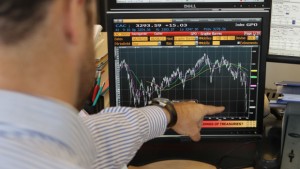I respectfully disagree. There are two issues to consider.
First, the opportunity cost of capital is real. What happens if your perfect value investment (Rocket Ship or Waking Beast) hasn’t moved anywhere over the last 3-5 years even though the market is up 60% over the same period of time? What if another stock that you have considered at the same time has appreciated 150% while your stock has lagged behind or worse, declined? Well, the impact on your capital in real and opportunity cost is significant. An ill timed move over a certain period of time can end up costing you millions in opportunity cost alone. While diversification can help you mitigate the impact of opportunity cost, it can also reduce your returns should you diversify too much.
Second, while this might not be an issue for individual investors, this is a significant issue for professional money managers who must present their performance and answer to investors on regular basis. As such, most money managers end up under constant pressure to perform. To generate positive returns for their investors while outperforming the competition. Should they fail to do so, investors will not hesitate for a second to pull their money and allocate it to a better performing fund.
That is true even if the stock picks the manager has generated are well researched and shall provide the investment fund with outsized returns if given enough time. Unfortunately, most investors have a very short time frames and if they do not see immediate results they express their dissatisfaction by turning their back on the money managers and by walking away.
That is why TIMING must become increasingly important issue not only for individual investors but for money managers as well. Just imagine for a second what would happen if you could identify the exact timing of any anticipated move.
What if you could take a look at any given Rocket Ship or Waking Beast value stock and add another level of analysis that would allow you to identify exactly when that stock is going to start going up and at what point it will stop. What if you are able to determine the velocity of any such move and establish an exit point with great precision and long before it occurs.
Well, now you can.
That is what the second part of this book is all about. TIMING. We will add a level of timing analysis to your typical and well known value approach to investing. This quantum jump forward in financial analysis shall help you supercharge your investment returns while further reducing risk. We will take an in depth look at my unique method of timing the stock market (and individual stocks) and how you can apply this same type of analysis towards your own research and investing.
Further, we will take an in depth look at the overall stock market so I can show you exactly how it works. Through using modern science and mathematics I will show you how and why the overall stock market truly moves. For the first time in your life you will have a complete understanding that the stock market is neither volatile nor random, but acts exactly as it should by tracing out mathematical points of force in 3 dimensional space.
By the end of the TIMING section you should be able to use concepts discussed here to time the stock market and/or individual stocks with great accuracy. Leading you to amazing results, market beating performance and a much lower risk profile.
Let’s get to it.
Did you enjoy this article? If so, please share our blog with your friends as we try to get traction. Gratitude!!!










